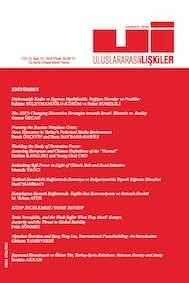
Uluslararası İlişkiler Dergisi
Yazarlar: Chong-jin OH, Young-gil CHAE
Konular:-
Anahtar Kelimeler:Korea,Turkey,SNS (Social Network Service),Hallyu,Korean Culture
Özet: This study aims to understand the factors and actors of Hallyu (Korean Wave) in Turkey in the context of the characteristic cultural and technological conditions of network society. Two contextual factors -time and space- motivate this particular case study. While the consumption of Korean pop cultural products in European countries has noticeably increased, few studies were conducted on Hallyu in the European continent. Especially, network media technologies including blog, SNS, and various online communication platforms enable the international fans to consume Korean cultural products across the time and spatial barriers. In addition, this case study is also interesting because of the shared historical and cultural heritages maintaining and developing cultural linkages between South Korea and Turkey. Thus, this study contextualizes the Hallyu phenomenon in the context of historical, cultural, and technological relations between the two countries